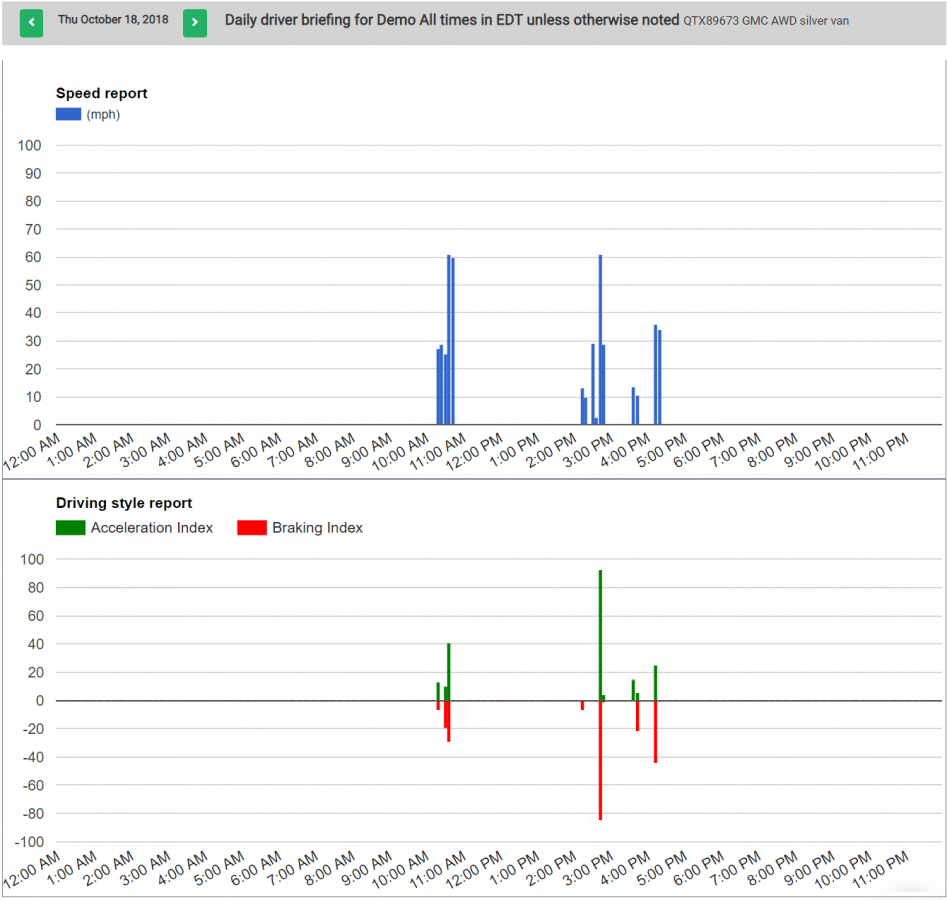Eco-driving is another way of saying ‘energy-efficient driving’. It’s a way to drive in order to reduce fuel usage and CO2 emissions. By eco-driving, you’re also cutting the risk of accidents. From a business perspective, companies that adopt eco-driving will save fuel and maintenance costs.
To start an eco-driving initiative requires thought, planning, and awareness. The best way is to persuade your team that they want to drive smarter and to develop good, safe driving practices.
TT Matics have got 8 tips for you to ensure that you and your staff drive safely and efficiently. We divide them into pre-trip checks and mid-journey tips.
Eco-driving pre-trip checks
Before you get behind the wheel, to give eco-driving a head start:
-
Optimise your trip
Vehicle tracking systems from TT Matics will help you to plan the most efficient daily routes for your team. They do this by giving you real-time tracking information that integrates with Google Traffic. So, you can see your drivers as they avoid roadblocks and areas of heavy congestion.
-
Check your tyres
You should encourage drivers to check tyre pressures at least monthly and always before long journeys. Under-inflated tyres increase rolling resistance; this can increase fuel usage by up to 5%.
-
Check the overall condition of your vehicles
Badly maintained vehicles increase fuel consumption; fact. As an example, a clogged air filter will fill your engine with dirty air, which reduces power output. So, more fuel is needed for the same journey. Regular fleet maintenance will save you money now and extends the life of your vans and trucks, too.
-
Avoid unnecessary loads
The heavier a vehicle is, the more fuel it consumes. Eco-drivers don’t carry or store unnecessary equipment in their vehicles; this can also lead to energy wastage.
Mid-journey tips
When on the road, be sure to:
-
Use air conditioning wisely
Limit its use only to periods of extreme heat and consider venting the vehicle before starting your trip. At low speeds, open the vehicle’s windows instead of using air conditioning. However, at higher speeds, it’s more fuel efficient to use the air-con.
-
Adopt an economical driving style
A good, eco-driving style displays these tendencies:
- minimal speeding – keep within the speed limit;
- minimal instances of harsh braking; and
- rapid acceleration.
Sudden acceleration or braking each require extra energy and will increase fuel expenditure. Hold steady speeds, where it’s safe to do so. Also, try to keep a good distance between you and other vehicles, to avoid having to brake suddenly. You can monitor real-time driver performance through driving style reports from your tracker software, such as these shown below from Quartix.
-
Don’t over-rev the engine
To avoid overloading your engine, change gears at around 2,500 rpm (2,000 rpm for a diesel lorry). Use your engine optimally, then you’ll be able to reduce your fuel costs significantly.
-
Turn off the engine once you’re parked up
If you stop for more than 20 seconds, it’s more economical to switch the engine off and restart. So, avoid letting the vehicle idle for too long.
Eco-driving is a simple but effective way that you can cut fuel costs and keep fleet maintenance expenses down. It has the added benefit of helping you to contribute to reducing harmful CO2 emissions, as well.
For more information, see our other blogs How Much Could You Really Save and Business Benefits of Vehicle Tracking.
Better still, to talk about eco-driving and understand how inexpensive it is to implement, contact us now!
This post was originally published on our US site in September 2019. Images, spellings and some expressions have changed.



